Greek mythology is not only interesting, but it is also the foundation of allusion and character genesis in literature. In this lesson plan, students will gain an understanding of Greek mythology and the Olympian gods and goddesses.
Note:Do not give student(s) the filled-in copy of the Gods/Goddesses chart. That is your answer key.
Although when we think of mythology we think of a collection of stories, there is a beginning to them. Understanding the beginning of the story, the creation of the world, gives us a framework to build upon as we learn about the different myths.
The short answer to how the Greeks viewed the creation of the world is this: Scary old gods came first; they got stomped down by their kids, who were better looking, younger gods. These gods created humans. Humans and gods fought for supremacy, and the humans won a few rounds but eventually got trounced and became more and more miserable.
Now, the longer answer: In the beginning, the universe was without form. It was not nothing; there was matter, but it was unorganized, shapeless, mixed up and dark. This was called Chaos.
After Chaos, more divinities, or gods, came into being.
Gaia, the Earth, held up Uranus, the sky. Gaia and Uranus had a bunch of kids. First they had a bunch of monsters including the Cyclops, and then they created the Titans as the second generation. Uranus hated all the Titans and was actually quite ugly about it — but there are only a couple of Titans that you need to remember: first, Oceanus, the god of the sea, and then Cronus, the strongest and best one of all. Gaia was pretty ticked at Uranus for being a jerk, so she helped Cronus overthrow him.
So, let’s keep this straight. Cronus is Uranus’s son. Cronus became the king (bye-bye Uranus), and married his sister, Rhea — another Titan. It’s like a soap opera. This was called the Golden Age because men, who had been made by a Titan named Prometheus, were living in harmony. Everything was hunky dory.
It didn’t last, though, because Cronus heard a prophecy that one of his sons would dethrone him, so every time his wife, Rhea, had a baby, he swallowed it. Rhea got a little sick of seeing all of her children swallowed alive, so she tricked Cronus when her sixth child, Zeus, was born; she wrapped up a rock to look like a baby and had Cronus swallow that instead. Zeus rescued his previously swallowed siblings, and all was right with the world.
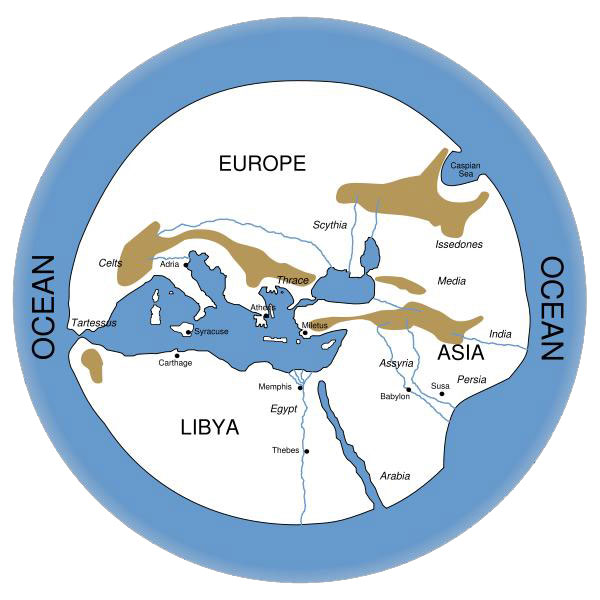
The Greek view of the world was a little different than ours. The Greeks believed that the world was flat, but circular, like a paper plate. At the center of the Universe was Greece.
Their world was divided by the Mediterranean, which means "Middle of the Lands" in Latin. The river Ocean flowed around the world in a clockwise motion.
In the north lived the Hyperboreans — an extremely happy people for whom life was sweet. When the old people became tired of living, they threw themselves into the sea. This was a land of constant vacation where people were said to live for 1,000 years.
In the south lived the Ethiopians. In Greek drama, mention is often made of various gods being in Ethiopia, meaning really far away. So, if I say I parked in Ethiopia this morning, would that mean I’m close to my office or far away? The Ethiopians were said to be on good terms with the gods and liked to entertain them.
To the west were the Elysian Fields. This was the closest the Greeks got to the idea of heaven; only the best and brightest of the dead people got to go there.
Use the information in this lesson to begin to fill in the gods and goddesses chart at the end of this lesson; you will also need to do your own research to complete it. Now that you understand the way that the Greeks viewed the beginning of the world, you are ready to learn about the Olympian gods.
First, we have to explore exactly what we mean by "Olympian gods." Mount Olympus is a real mountain in the north of Greece. Gradually, it became associated less and less with an actual mountain and more with an imaginary place high above the earth. According to the ancient Greeks, the gate to Olympus was made of clouds and it was guarded by four goddesses, the Seasons. Each god had his or her own dwelling place, but Olympus was home base.
There were up to 14 gods considered Olympian gods. Seven of them were Zeus and his siblings, and seven others were children of Zeus. Sometimes only 12 will be listed. The Greeks and Romans shared mythology, so you will find two names for most gods.
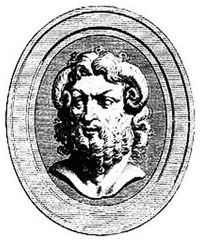
Zeus was the king of the hill. He was dominating, powerful and had a soft spot for pretty women. He could be terrifying when angry. His symbols were the thunderbolts, or lightning bolts made for him by the Cyclopes (his uncles); the eagle; and the scepter, or rod. Please copy this information onto your chart.
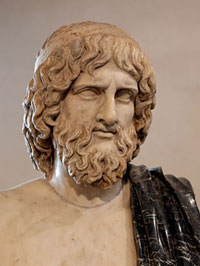
Hades, or Pluto, was the god of the underworld and of the dead. He was called the same names by the Romans, but they also sometimes called him Dis or Dis Pater. He was Zeus’s brother and married Persephone after kidnapping her against her will. He was gloomy and frightening.
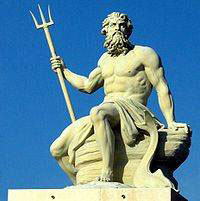
Next, we have Poseidon, or Neptune, as the Romans called him. He was Zeus’s brother, and he was the god of the sea and also earthquakes. He often is shown with a three-pronged spear called a trident that was made for him by his nephew, Hephaestus, and/or a fish.
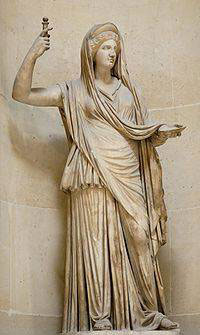
Our first goddess is Hera. She sits on the right side of Zeus and is his wife. Of course, she’s his sister, too, but that’s the way it was on Olympus. Hera’s Roman name is Juno, and she is the queen of the gods. She is the guardian of marriage and was well-loved by the Greeks; it’s kind of sad that she’s the goddess of marriage but her own marriage was so bad. She was often jealous of her husband’s girlfriends and did mean things to them, even the ones who didn’t want anything to do with him, but she could be tender and loving as well. The peacock was her symbol. In fact, the circles in a peacock’s tail are said to be the eyes of her 100-eyed servant, Argus.
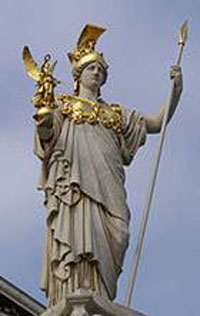
Next is Athena, or Minerva, the daughter who sprang fully formed from the head of Zeus after a major headache. She is the goddess of wisdom and war and also the protector and namesake of the city of Athens. She preferred reason to violence unless she was pushed. She turned Arachne into a spider for bragging that she could spin better than Athena. She was very competitive and is often pictured with her helmet and a spear. She carried Zeus’s shield, called the aegis. The owl was her bird. Can you see it in her hand?
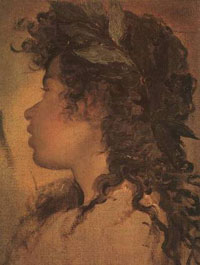
Apollo was a twin. His Roman name was the same as his Greek name. He was the god of the sun or light, poetry, music and medicine and was famous for his oracles (wise women to whom he gave his power to predict and interpret the future). He was very proud and also protective of his mother and sister. His symbols were the gold bow and arrows, and he often appears golden and shining. He wears a laurel wreath in memory of Daphne, who didn’t want to be his lover and prayed to Mother Earth for help escaping him; she was turned into a laurel tree.
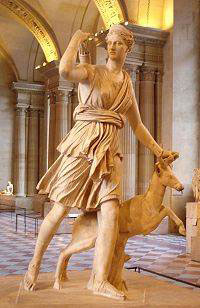
Artemis was Apollo’s twin. Her Roman name was Diana, and she was the goddess of hunting, chastity and the moon. She protects women and small children, is fiercely independent and particularly dislikes men. In pictures, she is seen accompanied by three hunting hounds, a bow and a fawn.
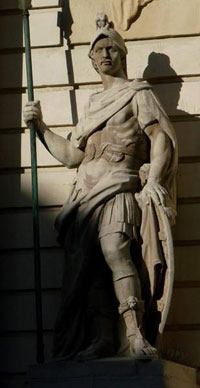
Ares or, as he is known by his Roman name, Mars, was the god of war. He would fight on both sides, if possible. He was young, strong and handsome, and liked to dress in battle clothes even when he wasn’t fighting.
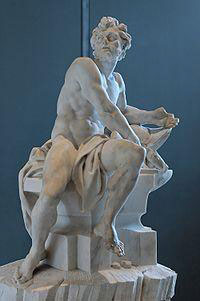
Hephaestus, or Vulcan, was born lame and was further crippled when he was thrown from Olympus by his mother, Hera, in a rage. He was the only Olympian with a disability. He was unhappily married to Aphrodite and worked as a blacksmith in the gods’ forge.
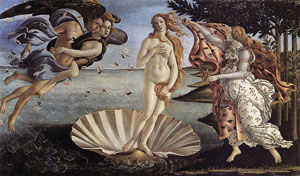
Hephaestus’s wife, Aphrodite, whose Roman name was Venus, was the goddess of love and beauty. She was born out of sea foam when the blood of Uranus dropped into the ocean. She was the mother of Eros and was irresistibly charming, fickle, vain and competitive. Her symbol was a cestus, or magic belt, that made everyone fall in love with the wearer; sometimes she would lend it to humans. This is a famous painting of the birth of Venus, or Aphrodite, by Botticelli.
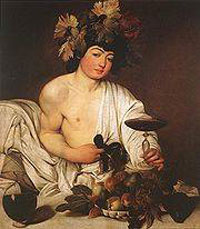
Dionysus was the partier of the mountain retreat. He was Zeus’s son by another woman, who was driven crazy by Hera and her jealousy. Dionysus went all around teaching people how to make wine and having a good time. Eventually, Hestia gave up her throne for him, and he lived on Olympus. He was the god of wine, of course, and also vegetation.
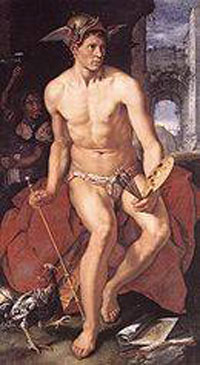
Hermes, or Mercury, was the god of science and invention, but he is best known as the messenger of the gods. He is often pictured with a winged helmet and sandals. He is said to have invented the alphabet, boxing and gymnastics! In this painting by Goltzius, you can see his helmet with wings; he’s not wearing his famous sandals, though.
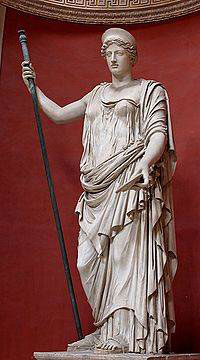
Demeter was the goddess of the crops and the harvest. She is also known as Ceres (Roman) and sometimes Deo. Her symbols include a torch, a crown, a scepter and stalks of grain. She is often portrayed with her daughter, Persephone, who was kidnapped by Hades and taken to the underworld. By the time she was rescued, she’d eaten six pomegranate seeds, so she couldn’t escape the underworld entirely. Her mother was so frantic that winter draped the land and no crops would grow. A deal was struck, and Persephone was allowed to return to her mother for half of the year. So each year, when she returns to the underworld, fall comes, then winter — but when she returns to her mother, spring and summer come again.
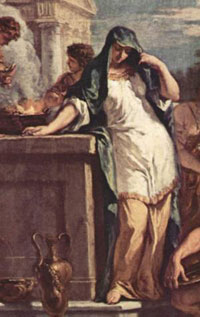
Hestia was Zeus’s sister and the goddess and protectress of hearth and home. She is also known by her Roman name, Vesta. She was gentle and kind and was very popular with the Greeks. She didn’t have a lot of adventures, so she’s rarely pictured in art.
Now, use at least two sources in addition to what you read here to fill in your chart (next page) completely. Write down the sources you used on the back of the chart.

A biographical poem, or biopoem, uses a simple but specific structure to describe the most important facts about someone. Your assignment is to write a biopoem about one of the gods or goddesses you have studied. You may choose any god or goddess (except Aphrodite, because she’s the example below). The blanks bewlow are for your rough draft. When you’re done, copy your final version onto a separate sheet of paper and, if you would like, decorate it.
Follow this format exactly, please:

Example (you may not use this goddess):
Aphrodite,
Goddess of Love, Desire, Beauty and Fertility.
A daughter of Zeus and Dione; wife of Hephaestus.
Lover of sons Aeneas and Cupid and brother Ares.
Who protects sailors.
Who needs a chariot.
Who fears War, Athena and Hera.
Who gives Helen to Paris, a magic belt to Hera, and Medea to Jason.
Resident of Mt. Olympus.
Venus.
Time to test yourself — and beware, answers may be used more than once!


Myths are a way of understanding the world. This lesson has been about Greek mythology, but every culture has myths. Myths define social customs and beliefs, explain natural and psychological phenomena, and provide a way for people to discuss things that cause anxiety.
Mythology is all around us. Here are just a few examples of places we find myths today:
Myths also make great stories. They come up in literature all over the place, from really serious stuff like Dante to comic strips. Myths inspire music; actually the word music comes from the mythological muses who inspired art of all kinds. Painters such as Michelangelo and Botticelli were inspired by myths. Even children’s movies are a good place to look for myths; you will find them everywhere, including Snow White, Star Wars and The Lord of the Rings. Can you find at least three examples of mythology connections in the world?
Hopefully myths inspire you, too, because you are about to create your own myth! As you know, myths were often used to explain natural phenomena. Your challenge is to create your own myth to explain some natural phenomenon or land formation. It could be anything from the origin of hurricanes to how the Grand Canyon or a mountain range was created. You will tell this myth in a story format.
Here are the guidelines:
Here are some ideas to get you thinking:
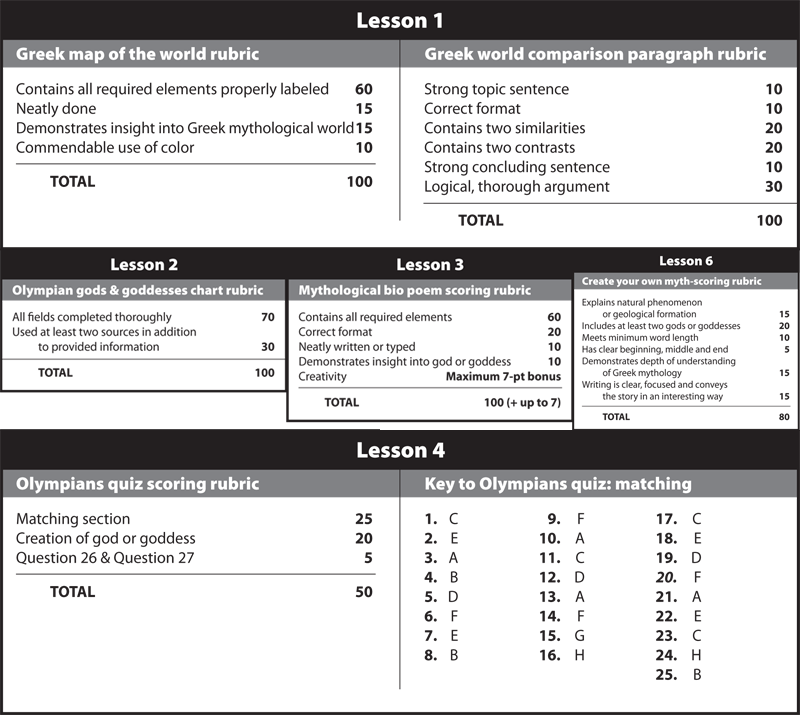
This series of lessons was designed to meet the needs of gifted children for extension beyond the standard curriculum with the greatest ease of use for the educator. The lessons may be given to the students for individual self-guided work, or they may be taught in a classroom or a home-school setting. Assessment strategies and rubrics are included at the end of each section. The rubrics often include a column for "scholar points," which are invitations for students to extend their efforts beyond that which is required, incorporating creativity or higher level technical skills.